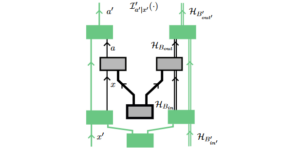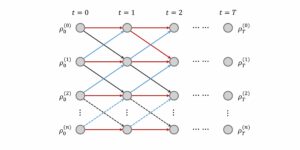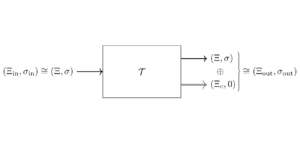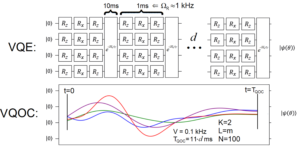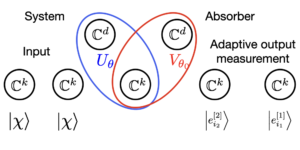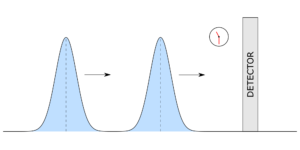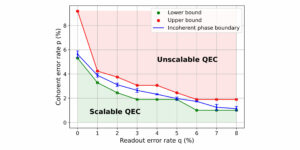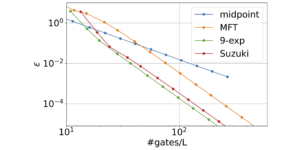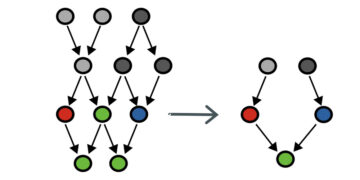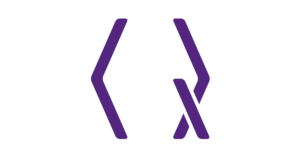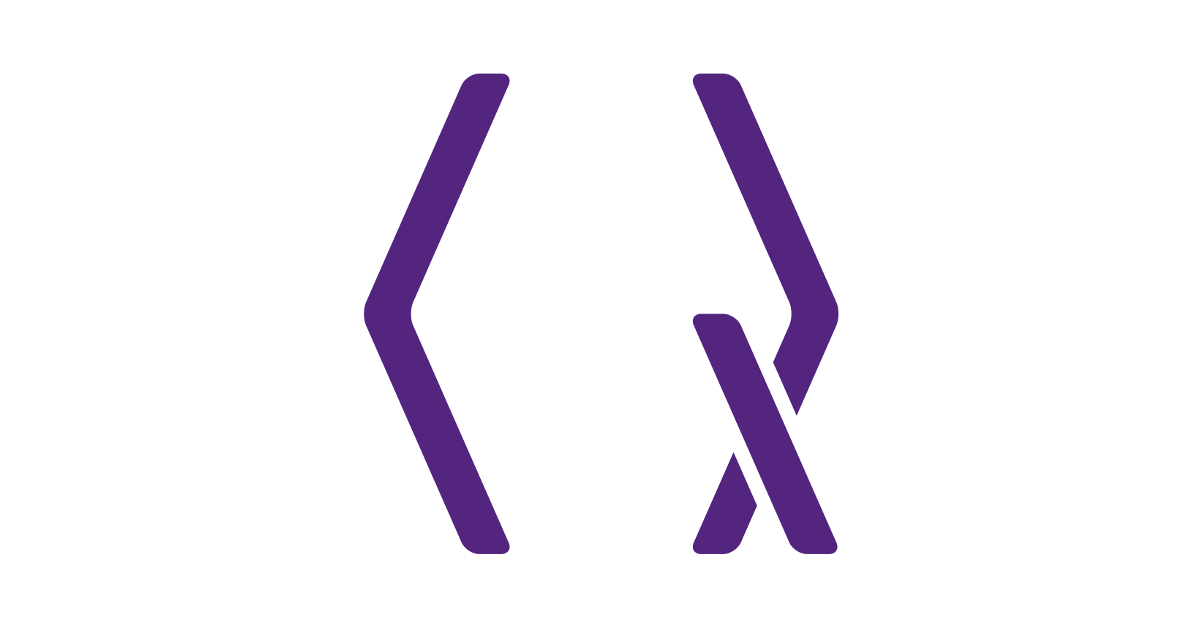
1IBM Quantum, IBM Research Europe – Zurich
2ETH Zurich
Find this paper interesting or want to discuss? Scite or leave a comment on SciRate.
Abstract
Simulating the time-evolution of a Hamiltonian is one of the most promising applications of quantum computers. Multi-Product Formulas (MPFs) are well suited to replace standard product formulas since they scale better with respect to time and approximation errors. Hamiltonian simulation with MPFs was first proposed in a fully quantum setting using a linear combination of unitaries. Here, we analyze and demonstrate a hybrid quantum-classical approach to MPFs that classically combines expectation values evaluated with a quantum computer. This has the same approximation bounds as the fully quantum MPFs, but, in contrast, requires no additional qubits, no controlled operations, and is not probabilistic. We show how to design MPFs that do not amplify the hardware and sampling errors, and demonstrate their performance. In particular, we illustrate the potential of our work by theoretically analyzing the benefits when applied to a classically intractable spin-boson model, and by computing the dynamics of the transverse field Ising model using a classical simulator as well as quantum hardware. We observe an error reduction of up to an order of magnitude when compared to a product formula approach by suppressing hardware noise with Pauli Twirling, pulse efficient transpilation, and a novel zero-noise extrapolation based on scaled cross-resonance pulses. The MPF methodology reduces the circuit depth and may therefore represent an important step towards quantum advantage for Hamiltonian simulation on noisy hardware.
► BibTeX data
► References
[1] IBM Quantum. https://quantum-computing.ibm.com/.
https://quantum-computing.ibm.com/
[2] D. Aharonov and A. Ta-Shma. Adiabatic quantum state generation and statistical zero knowledge. In Proc. 35th Annu. ACM Symp. Theory Comput., page 20–29, 2003. 10.1145/780542.780546.
https://doi.org/10.1145/780542.780546
[3] G. Ahokas. Improved algorithms for approximate quantum Fourier transforms and sparse Hamiltonian simulations. 2004. 10.11575/PRISM/22839.
https://doi.org/10.11575/PRISM/22839
[4] T. Alexander, N. Kanazawa, D. J. Egger, L. Capelluto, C. J. Wood, A. Javadi-Abhari, and D. C. McKay. Qiskit pulse: programming quantum computers through the cloud with pulses. Quantum Sci. Technol., 5 (4): 044006, aug 2020. 10.1088/2058-9565/aba404.
https://doi.org/10.1088/2058-9565/aba404
[5] D. An, D. Fang, and L. Lin. Time-dependent Hamiltonian simulation of highly oscillatory dynamics and superconvergence for Schrödinger equation. Quantum, 6: 690, 2022. 10.22331/q-2022-04-15-690.
https://doi.org/10.22331/q-2022-04-15-690
[6] H. Bernien, S. Schwartz, A. Keesling, H. Levine, A. Omran, H. Pichler, S. Choi, A. S. Zibrov, M. Endres, M. Greiner, V. Vuletić, and M. D. Lukin. Probing many-body dynamics on a 51-atom quantum simulator. Nature, 551 (7682): 579–584, Nov 2017. ISSN 1476-4687. 10.1038/nature24622.
https://doi.org/10.1038/nature24622
[7] D. W. Berry, G. Ahokas, R. Cleve, and B. C. Sanders. Efficient quantum algorithms for simulating sparse Hamiltonians. Commun. Math. Phys., 270 (2): 359–371, Mar 2007. ISSN 1432-0916. 10.1007/s00220-006-0150-x.
https://doi.org/10.1007/s00220-006-0150-x
[8] D. W. Berry, A. M. Childs, Y. Su, X. Wang, and N. Wiebe. Time-dependent Hamiltonian simulation with $L^1$-norm scaling. Quantum, 4: 254, 2020. 10.22331/q-2020-04-20-254.
https://doi.org/10.22331/q-2020-04-20-254
[9] R. C. Bialczak, M. Ansmann, M. Hofheinz, E. Lucero, M. Neeley, A. D. O'Connell, D. Sank, H. Wang, J. Wenner, M. Steffen, A. N. Cleland, and J. M. Martinis. Quantum process tomography of a universal entangling gate implemented with Josephson phase qubits. Nat. Phys., 6 (6): 409–413, Jun 2010. ISSN 1745-2481. 10.1038/nphys1639.
https://doi.org/10.1038/nphys1639
[10] S. Blanes, F. Casas, and J. Ros. Extrapolation of symplectic Integrators. Celestial Mech. Dyn. Astron., 75: 149–161, 1999. 10.1023/A:1008364504014.
https://doi.org/10.1023/A:1008364504014
[11] S. Bravyi, D. Gosset, R. König, and M. Tomamichel. Quantum advantage with noisy shallow circuits. Nat. Phys., 16 (10): 1040–1045, Oct 2020. ISSN 1745-2481. 10.1038/s41567-020-0948-z.
https://doi.org/10.1038/s41567-020-0948-z
[12] A. Browaeys and T. Lahaye. Many-body physics with individually controlled Rydberg atoms. Nat. Phys., 16 (2): 132–142, Feb 2020. ISSN 1745-2481. 10.1038/s41567-019-0733-z.
https://doi.org/10.1038/s41567-019-0733-z
[13] J. C. Butcher. Numerical Methods for Ordinary Differential Equations. Wiley, 3 edition, 7 2016. ISBN 9781119121534. 10.1002/9781119121534. Chapter 33.
https://doi.org/10.1002/9781119121534
[14] Z. Cai and S. C. Benjamin. Constructing smaller Pauli twirling sets for arbitrary error channels. Sci. Rep., 9 (1): 11281, Aug 2019. ISSN 2045-2322. 10.1038/s41598-019-46722-7.
https://doi.org/10.1038/s41598-019-46722-7
[15] E. Campbell. Random compiler for fast hamiltonian simulation. Phys. Rev. Lett., 123: 070503, Aug 2019. 10.1103/PhysRevLett.123.070503.
https://doi.org/10.1103/PhysRevLett.123.070503
[16] A. Carrera Vazquez and S. Woerner. Efficient state preparation for quantum amplitude estimation. Phys. Rev. Applied, 15: 034027, Mar 2021. 10.1103/PhysRevApplied.15.034027.
https://doi.org/10.1103/PhysRevApplied.15.034027
[17] I. Chen, B. Burdick, Y. Yao, P. P. Orth, and T. Iadecola. Error-mitigated simulation of quantum many-body scars on quantum computers with pulse-level control. Phys. Rev. Res., 4: 043027, Oct 2022. 10.1103/PhysRevResearch.4.043027.
https://doi.org/10.1103/PhysRevResearch.4.043027
[18] A. Chiesa, F. Tacchino, M. Grossi, P. Santini, I. Tavernelli, D. Gerace, and S. Carretta. Quantum hardware simulating four-dimensional inelastic neutron scattering. Nat. Phys., 15 (5): 455–459, May 2019. ISSN 1745-2481. 10.1038/s41567-019-0437-4.
https://doi.org/10.1038/s41567-019-0437-4
[19] A. M. Childs. On the relationship between continuous- and discrete-time quantum walk. Commun. Math. Phys., 294 (2): 581–603, Mar 2010. ISSN 1432-0916. 10.1007/s00220-009-0930-1.
https://doi.org/10.1007/s00220-009-0930-1
[20] A. M. Childs and R. Kothari. Limitations on the simulation of non-sparse Hamiltonians. Quantum Info. Comput., 10 (7): 669–684, July 2010. ISSN 1533-7146. 10.5555/2011373.2011380.
https://doi.org/10.5555/2011373.2011380
[21] A. M. Childs and R. Kothari. Simulating sparse Hamiltonians with star decompositions. In Proc. 5th Conf. Theory Quantum Comput. Commun. Cryptogr., pages 94–103, 2011. ISBN 3-642-18072-8, 978-3-642-18072-9. 10.5555/1946127.19461355.
https://doi.org/10.5555/1946127.19461355
[22] A. M. Childs and Y. Su. Nearly optimal lattice simulation by product formulas. Phys. Rev. Lett., 123: 050503, Aug 2019. 10.1103/PhysRevLett.123.050503.
https://doi.org/10.1103/PhysRevLett.123.050503
[23] A. M. Childs and N. Wiebe. Hamiltonian simulation using linear combinations of unitary operations. Quantum Info. Comput., 12 (11–12): 901–924, November 2012. ISSN 1533-7146. 10.5555/2481569.2481570.
https://doi.org/10.5555/2481569.2481570
[24] A. M. Childs, R. Cleve, E. Deotto, E. Farhi, S. Gutmann, and D. A. Spielman. Exponential algorithmic speedup by a quantum walk. In Proc. 35th Annu. ACM Symp. Theory Comput., pages 59–68, 2003. ISBN 1-58113-674-9. 10.1145/780542.780552.
https://doi.org/10.1145/780542.780552
[25] A. M. Childs, D. Maslov, Y. Nam, N. J. Ross, and Y. Su. Toward the first quantum simulation with quantum speedup. PNAS, 115 (38): 9456–9461, 2018. ISSN 0027-8424. 10.1073/pnas.1801723115.
https://doi.org/10.1073/pnas.1801723115
[26] A. M. Childs, Y. Su, M. C. Tran, N. Wiebe, and S. Zhu. Theory of Trotter error with commutator scaling. Phys. Rev. X, 11 (1): 011020, February 2021. 10.1103/PhysRevX.11.011020.
https://doi.org/10.1103/PhysRevX.11.011020
[27] S. A. Chin. Multi-product splitting and Runge-Kutta-Nyström integrators. Celestial Mech. Dyn. Astron., 106 (4): 391–406, Apr 2010. ISSN 1572-9478. 10.1007/s10569-010-9255-9.
https://doi.org/10.1007/s10569-010-9255-9
[28] C. Cı̂rstoiu, Z. Holmes, J. Iosue, L. Cincio, P. J. Coles, and A. Sornborger. Variational fast forwarding for quantum simulation beyond the coherence time. npj Quantum Inf., 6 (1): 82, Sep 2020. ISSN 2056-6387. 10.1038/s41534-020-00302-0.
https://doi.org/10.1038/s41534-020-00302-0
[29] R. M. Corless, G. H. Gonnet, D. E. G. Hare, D. J. Jeffrey, and D. E. Knuth. On the Lambert W function. Adv. Comput. Math., 5 (4): 329–359, 1996. 10.1007/BF02124750.
https://doi.org/10.1007/BF02124750
[30] A. Di Paolo, P. Kl. Barkoutsos, I. Tavernelli, and A. Blais. Variational quantum simulation of ultrastrong light-matter coupling. Phys. Rev. Research, 2: 033364, Sep 2020. 10.1103/PhysRevResearch.2.033364.
https://doi.org/10.1103/PhysRevResearch.2.033364
[31] E. F. Dumitrescu, A. J. McCaskey, G. Hagen, G. R. Jansen, T. D. Morris, T. Papenbrock, R. C. Pooser, D. J. Dean, and P. Lougovski. Cloud quantum computing of an atomic nucleus. Phys. Rev. Lett., 120: 210501, May 2018. 10.1103/PhysRevLett.120.210501.
https://doi.org/10.1103/PhysRevLett.120.210501
[32] N. Earnest, C. Tornow, and D. J. Egger. Pulse-efficient circuit transpilation for quantum applications on cross-resonance-based hardware. Phys. Rev. Research, 3: 043088, Oct 2021. 10.1103/PhysRevResearch.3.043088.
https://doi.org/10.1103/PhysRevResearch.3.043088
[33] D. J. Egger and F. K. Wilhelm. Multimode circuit quantum electrodynamics with hybrid metamaterial transmission lines. Phys. Rev. Lett., 111: 163601, Oct 2013. 10.1103/PhysRevLett.111.163601.
https://doi.org/10.1103/PhysRevLett.111.163601
[34] S. Endo, Q. Zhao, Y. Li, S. Benjamin, and X. Yuan. Mitigating algorithmic errors in a Hamiltonian simulation. Phys. Rev. A, 99: 012334, Jan 2019. 10.1103/PhysRevA.99.012334.
https://doi.org/10.1103/PhysRevA.99.012334
[35] S. Endo, J. Sun, Y. Li, S. C. Benjamin, and X. Yuan. Variational quantum simulation of general processes. Phys. Rev. Lett., 125: 010501, Jun 2020. 10.1103/PhysRevLett.125.010501.
https://doi.org/10.1103/PhysRevLett.125.010501
[36] P. K. Faehrmann, M. Steudtner, R. Kueng, M. Kieferova, and J. Eisert. Randomizing multi-product formulas for Hamiltonian simulation. Quantum, 6: 806, September 2022. ISSN 2521-327X. 10.22331/q-2022-09-19-806.
https://doi.org/10.22331/q-2022-09-19-806
[37] R. P. Feynman. Simulating physics with computers. Int. J. Theor. Phys., 21 (6): 467–488, Jun 1982. ISSN 1572-9575. 10.1007/BF02650179.
https://doi.org/10.1007/BF02650179
[38] L. E. Fischer, D. Miller, F. Tacchino, P. Kl. Barkoutsos, D. J. Egger, and I. Tavernelli. Ancilla-free implementation of generalized measurements for qubits embedded in a qudit space. Phys. Rev. Research, 4: 033027, Jul 2022. 10.1103/PhysRevResearch.4.033027.
https://doi.org/10.1103/PhysRevResearch.4.033027
[39] A. Frisk Kockum, A. Miranowicz, S. De Liberato, S. Savasta, and F. Nori. Ultrastrong coupling between light and matter. Nat. Rev. Phys., 1 (1): 19–40, Jan 2019. ISSN 2522-5820. 10.1038/s42254-018-0006-2.
https://doi.org/10.1038/s42254-018-0006-2
[40] J. Gacon, C. Zoufal, G. Carleo, and S. Woerner. Simultaneous Perturbation Stochastic Approximation of the Quantum Fisher Information. Quantum, 5: 567, October 2021. ISSN 2521-327X. 10.22331/q-2021-10-20-567.
https://doi.org/10.22331/q-2021-10-20-567
[41] G. García-Pérez, M. A. C. Rossi, B. Sokolov, F. Tacchino, P. Kl. Barkoutsos, G. Mazzola, I. Tavernelli, and S. Maniscalco. Learning to measure: Adaptive informationally complete generalized measurements for quantum algorithms. PRX Quantum, 2: 040342, Nov 2021. 10.1103/PRXQuantum.2.040342.
https://doi.org/10.1103/PRXQuantum.2.040342
[42] T. Giurgica-Tiron, Y. Hindy, R. LaRose, A. Mari, and W. J. Zeng. Digital zero noise extrapolation for quantum error mitigation. In IEEE Int. Conf. on QCE, pages 306–316, 2020. 10.1109/QCE49297.2020.00045.
https://doi.org/10.1109/QCE49297.2020.00045
[43] C. Gross and I. Bloch. Quantum simulations with ultracold atoms in optical lattices. Science, 357 (6355): 995–1001, 2017. 10.1126/science.aal3837.
https://doi.org/10.1126/science.aal3837
[44] C. Hadfield, S. Bravyi, R. Raymond, and A. Mezzacapo. Measurements of quantum Hamiltonians with locally-biased classical shadows. Commun. Math. Phys., 391 (3): 951–967, May 2022. ISSN 1432-0916. 10.1007/s00220-022-04343-8.
https://doi.org/10.1007/s00220-022-04343-8
[45] M. Hagan and N. Wiebe. Composite quantum simulations. 2022. URL https://arxiv.org/abs/2206.06409.
arXiv:2206.06409
[46] G. Hao Low, V. Kliuchnikov, and N. Wiebe. Well-conditioned multiproduct Hamiltonian simulation. 2019. URL https://arxiv.org/abs/1907.11679.
arXiv:1907.11679
[47] A. W. Harrow, A. Hassidim, and S. Lloyd. Quantum algorithm for linear systems of equations. Phys. Rev. Lett., 103: 150502, Oct 2009. 10.1103/PhysRevLett.103.150502.
https://doi.org/10.1103/PhysRevLett.103.150502
[48] A. Hashim, R. K. Naik, A. Morvan, J. L. Ville, B. Mitchell, J. M. Kreikebaum, M. Davis, E. Smith, C. Iancu, K. P. O'Brien, I. Hincks, J. J. Wallman, J. Emerson, and I. Siddiqi. Randomized compiling for scalable quantum computing on a noisy superconducting quantum processor. Phys. Rev. X, 11: 041039, Nov 2021. 10.1103/PhysRevX.11.041039.
https://doi.org/10.1103/PhysRevX.11.041039
[49] A. He, B. Nachman, W. A. de Jong, and C. W. Bauer. Zero-noise extrapolation for quantum-gate error mitigation with identity insertions. Phys. Rev. A, 102: 012426, Jul 2020. 10.1103/PhysRevA.102.012426.
https://doi.org/10.1103/PhysRevA.102.012426
[50] A. Hoorfar and M. Hassani. Inequalities on the Lambert W function and hyperpower function. JIPAM, 9, 01 2008. URL http://eudml.org/doc/130024.
http://eudml.org/doc/130024
[51] H.-Y. Huang, R. Kueng, and J. Preskill. Predicting many properties of a quantum system from very few measurements. Nat. Phys., 16 (10): 1050–1057, Oct 2020. ISSN 1745-2481. 10.1038/s41567-020-0932-7.
https://doi.org/10.1038/s41567-020-0932-7
[52] S. Indrajeet, H. Wang, M.D. Hutchings, B.G. Taketani, F. K. Wilhelm, M.D. LaHaye, and B.L.T. Plourde. Coupling a superconducting qubit to a left-handed metamaterial resonator. Phys. Rev. Applied, 14: 064033, Dec 2020. 10.1103/PhysRevApplied.14.064033.
https://doi.org/10.1103/PhysRevApplied.14.064033
[53] P. Jurcevic, A. Javadi-Abhari, L. S. Bishop, I. Lauer, D. F. Bogorin, M. Brink, L. Capelluto, O. Günlük, T. Itoko, N. Kanazawa, and et al. Demonstration of quantum volume 64 on a superconducting quantum computing system. Quantum Sci. Technol., 6 (2): 025020, mar 2021. 10.1088/2058-9565/abe519.
https://doi.org/10.1088/2058-9565/abe519
[54] H. Kamakari, S. N. Sun, M. Motta, and Austin J. Minnich. Digital quantum simulation of open quantum systems using quantum imaginary–time evolution. PRX Quantum, 3: 010320, Feb 2022. 10.1103/PRXQuantum.3.010320.
https://doi.org/10.1103/PRXQuantum.3.010320
[55] Naoki Kanazawa, Daniel J. Egger, Yael Ben-Haim, Helena Zhang, William E. Shanks, Gadi Aleksandrowicz, and Christopher J. Wood. Qiskit experiments: A python package to characterize and calibrate quantum computers. J. Open Source Softw., 8 (84): 5329, 2023. 10.21105/joss.05329.
https://doi.org/10.21105/joss.05329
[56] A. Kandala, K. Temme, A. D. Córcoles, A. Mezzacapo, J. M. Chow, and J. M. Gambetta. Error mitigation extends the computational reach of a noisy quantum processor. Nature, 567 (7749): 491–495, Mar 2019. ISSN 1476-4687. 10.1038/s41586-019-1040-7.
https://doi.org/10.1038/s41586-019-1040-7
[57] Y. Kim, C. J. Wood, T. J. Yoder, S. T. Merkel, J. M. Gambetta, K. Temme, and A. Kandala. Scalable error mitigation for noisy quantum circuits produces competitive expectation values. Nat. Phys., 19 (5): 752–759, May 2023. 10.1038/s41567-022-01914-3.
https://doi.org/10.1038/s41567-022-01914-3
[58] R. LaRose, A. M., S. Kaiser, P. J. Karalekas, A. A. Alves, P. Czarnik, M. El Mandouh, M. H. Gordon, Y. Hindy, A. Robertson, P. T., N. Shammah, and W. J. Zeng. Mitiq: A software package for error mitigation on noisy quantum computers. Quantum, 6: 774, August 2022. ISSN 2521-327X. 10.22331/q-2022-08-11-774.
https://doi.org/10.22331/q-2022-08-11-774
[59] D. Layden. First-order Trotter error from a second-order perspective. Phys. Rev. Lett., 128: 210501, May 2022. 10.1103/PhysRevLett.128.210501.
https://doi.org/10.1103/PhysRevLett.128.210501
[60] A. J. Leggett, S. Chakravarty, A. T. Dorsey, Matthew P. A. Fisher, A. Garg, and W. Zwerger. Dynamics of the dissipative two-state system. Rev. Mod. Phys., 59: 1–85, Jan 1987. 10.1103/RevModPhys.59.1.
https://doi.org/10.1103/RevModPhys.59.1
[61] Y. Li and S. C. Benjamin. Efficient variational quantum simulator incorporating active error minimization. Phys. Rev. X, 7: 021050, Jun 2017. 10.1103/PhysRevX.7.021050.
https://doi.org/10.1103/PhysRevX.7.021050
[62] D. A. Lidar. Review of Decoherence-Free Subspaces, Noiseless Subsystems, and Dynamical Decoupling, pages 295–354. John Wiley & Sons, Ltd, 2014. ISBN 9781118742631. https://doi.org/10.1002/9781118742631.ch11.
https://doi.org/10.1002/9781118742631.ch11
[63] S. Lloyd. Universal quantum simulators. Science, 273 (5278): 1073–1078, 1996. 10.1126/science.273.5278.1073.
https://doi.org/10.1126/science.273.5278.1073
[64] E. Magesan and J. M. Gambetta. Effective Hamiltonian models of the cross-resonance gate. Phys. Rev. A, 101: 052308, May 2020. 10.1103/PhysRevA.101.052308.
https://doi.org/10.1103/PhysRevA.101.052308
[65] A. D. McLachlan. A variational solution of the time-dependent Schrodinger equation. Mol. Phys., 8 (1): 39–44, 1964. 10.1080/00268976400100041.
https://doi.org/10.1080/00268976400100041
[66] A. Miessen, P. J. Ollitrault, and I. Tavernelli. Quantum algorithms for quantum dynamics: A performance study on the spin-boson model. Phys. Rev. Research, 3: 043212, Dec 2021. 10.1103/PhysRevResearch.3.043212.
https://doi.org/10.1103/PhysRevResearch.3.043212
[67] M. Mohseni, A. T. Rezakhani, and D. A. Lidar. Quantum-process tomography: Resource analysis of different strategies. Phys. Rev. A, 77: 032322, Mar 2008. 10.1103/PhysRevA.77.032322.
https://doi.org/10.1103/PhysRevA.77.032322
[68] Y. Ouyang, D. R. White, and E. T. Campbell. Compilation by stochastic Hamiltonian sparsification. Quantum, 4: 235, February 2020. ISSN 2521-327X. 10.22331/q-2020-02-27-235.
https://doi.org/10.22331/q-2020-02-27-235
[69] B. Pokharel, N. Anand, B. Fortman, and D. A. Lidar. Demonstration of fidelity improvement using dynamical decoupling with superconducting qubits. Phys. Rev. Lett., 121: 220502, Nov 2018. 10.1103/PhysRevLett.121.220502.
https://doi.org/10.1103/PhysRevLett.121.220502
[70] Qiskit contributors. Qiskit: An open-source framework for quantum computing, 2023. URL https://doi.org/10.5281/zenodo.2562111.
https://doi.org/10.5281/zenodo.2562111
[71] L. F. Richardson. The approximate arithmetical solution by finite differences of physical problems involving differential equations, with an application to the stresses in a masonry dam. Philos. Trans. R. Soc. London, Ser. A, 210: 307–357, 1911. ISSN 02643952. URL http://www.jstor.org/stable/90994.
http://www.jstor.org/stable/90994
[72] S. Sachdev. Quantum Phase Transitions. Cambridge University Press, 2 edition, 2011. 10.1017/CBO9780511973765.
https://doi.org/10.1017/CBO9780511973765
[73] S. Sheldon, E. Magesan, J. M. Chow, and J. M. Gambetta. Procedure for systematically tuning up cross-talk in the cross-resonance gate. Phys. Rev. A, 93: 060302, Jun 2016. 10.1103/PhysRevA.93.060302.
https://doi.org/10.1103/PhysRevA.93.060302
[74] A. Sidi. Practical Extrapolation Methods: Theory and Applications. Cambridge University Press, 2003. ISBN 9780511546815. 10.1017/CBO9780511546815.
https://doi.org/10.1017/CBO9780511546815
[75] N. Stamatopoulos, D. J. Egger, Y. Sun, C. Zoufal, R. Iten, N. Shen, and S. Woerner. Option Pricing using Quantum Computers. Quantum, 4: 291, July 2020. ISSN 2521-327X. 10.22331/q-2020-07-06-291.
https://doi.org/10.22331/q-2020-07-06-291
[76] J. P. T. Stenger, N. T. Bronn, D. J. Egger, and D. Pekker. Simulating the dynamics of braiding of Majorana zero modes using an IBM quantum computer. Phys. Rev. Research, 3: 033171, Aug 2021. 10.1103/PhysRevResearch.3.033171.
https://doi.org/10.1103/PhysRevResearch.3.033171
[77] N. Sundaresan, I. Lauer, E. Pritchett, E. Magesan, P. Jurcevic, and J. M. Gambetta. Reducing unitary and spectator errors in cross resonance with optimized rotary echoes. PRX Quantum, 1: 020318, Dec 2020. 10.1103/PRXQuantum.1.020318.
https://doi.org/10.1103/PRXQuantum.1.020318
[78] M. Suzuki. General theory of fractal path integrals with applications to many-body theories and statistical physics. J. Math. Phys., 32 (2): 400–407, 1991. 10.1063/1.529425.
https://doi.org/10.1063/1.529425
[79] K. Temme, S. Bravyi, and J. M. Gambetta. Error mitigation for short-depth quantum circuits. Phys. Rev. Lett., 119: 180509, Nov 2017. 10.1103/PhysRevLett.119.180509.
https://doi.org/10.1103/PhysRevLett.119.180509
[80] The IBM Decision Optimization on Cloud team. DOCPLEX, 2022. URL https://pypi.org/project/docplex/.
https://pypi.org/project/docplex/
[81] C. Tornow, N. Kanazawa, W. E. Shanks, and D. J. Egger. Minimum quantum run-time characterization and calibration via restless measurements with dynamic repetition rates. Phys. Rev. Applied, 17: 064061, Jun 2022. 10.1103/PhysRevApplied.17.064061.
https://doi.org/10.1103/PhysRevApplied.17.064061
[82] V. Tripathi, H. Chen, M. Khezri, K. W. Yip, E. M. Levenson-Falk, and D. A. Lidar. Suppression of crosstalk in superconducting qubits using dynamical decoupling. Phys. Rev. Appl., 18: 024068, Aug 2022. 10.1103/PhysRevApplied.18.024068.
https://doi.org/10.1103/PhysRevApplied.18.024068
[83] A. Vazquez Carrera, R. Hiptmair, and S. Woerner. Enhancing the quantum linear systems algorithm using richardson extrapolation. ACM Trans. Quantum Comput., 3 (1), jan 2022. ISSN 2643-6809. 10.1145/3490631.
https://doi.org/10.1145/3490631
[84] J. J. Wallman and J. Emerson. Noise tailoring for scalable quantum computation via randomized compiling. Phys. Rev. A, 94: 052325, Nov 2016. 10.1103/PhysRevA.94.052325.
https://doi.org/10.1103/PhysRevA.94.052325
[85] K. Wan, M. Berta, and E. T. Campbell. Randomized quantum algorithm for statistical phase estimation. Phys. Rev. Lett., 129: 030503, Jul 2022. 10.1103/PhysRevLett.129.030503.
https://doi.org/10.1103/PhysRevLett.129.030503
[86] D. Wecker, B. Bauer, B. K. Clark, M. B. Hastings, and M. Troyer. Gate-count estimates for performing quantum chemistry on small quantum computers. Phys. Rev. A, 90: 022305, Aug 2014. 10.1103/PhysRevA.90.022305.
https://doi.org/10.1103/PhysRevA.90.022305
[87] J. Weidenfeller, L. C. Valor, J. Gacon, C. Tornow, L. Bello, S. Woerner, and D. J. Egger. Scaling of the quantum approximate optimization algorithm on superconducting qubit based hardware. Quantum, 6: 870, December 2022. ISSN 2521-327X. 10.22331/q-2022-12-07-870.
https://doi.org/10.22331/q-2022-12-07-870
[88] Y. Yongxin. Quantum many-body scars on QC, 2022. URL https://gitlab.com/QANED/rydberg_mfim.
https://gitlab.com/QANED/rydberg_mfim
[89] X. Yuan, S. Endo, Q. Zhao, Ying Li, and S. Benjamin. Theory of variational quantum simulation. Quantum, 3: 191, 2019. 10.22331/q-2019-10-07-191.
https://doi.org/10.22331/q-2019-10-07-191
[90] J. Zhang, G. Pagano, P. W. Hess, A. Kyprianidis, P. Becker, H. Kaplan, A. V. Gorshkov, Z.-X. Gong, and C. Monroe. Observation of a many-body dynamical phase transition with a 53-qubit quantum simulator. Nature, 551 (7682): 601–604, Nov 2017. ISSN 1476-4687. 10.1038/nature24654.
https://doi.org/10.1038/nature24654
[91] C. Zoufal, D. Sutter, and S. Woerner. Error bounds for variational quantum time evolution. 2021. URL https://arxiv.org/abs/2108.00022.
arXiv:2108.00022
Cited by
[1] Alberto Di Meglio, Karl Jansen, Ivano Tavernelli, Constantia Alexandrou, Srinivasan Arunachalam, Christian W. Bauer, Kerstin Borras, Stefano Carrazza, Arianna Crippa, Vincent Croft, Roland de Putter, Andrea Delgado, Vedran Dunjko, Daniel J. Egger, Elias Fernandez-Combarro, Elina Fuchs, Lena Funcke, Daniel Gonzalez-Cuadra, Michele Grossi, Jad C. Halimeh, Zoe Holmes, Stefan Kuhn, Denis Lacroix, Randy Lewis, Donatella Lucchesi, Miriam Lucio Martinez, Federico Meloni, Antonio Mezzacapo, Simone Montangero, Lento Nagano, Voica Radescu, Enrique Rico Ortega, Alessandro Roggero, Julian Schuhmacher, Joao Seixas, Pietro Silvi, Panagiotis Spentzouris, Francesco Tacchino, Kristan Temme, Koji Terashi, Jordi Tura, Cenk Tuysuz, Sofia Vallecorsa, Uwe-Jens Wiese, Shinjae Yoo, and Jinglei Zhang, "Quantum Computing for High-Energy Physics: State of the Art and Challenges. Summary of the QC4HEP Working Group", arXiv:2307.03236, (2023).
[2] Johannes Weidenfeller, Lucia C. Valor, Julien Gacon, Caroline Tornow, Luciano Bello, Stefan Woerner, and Daniel J. Egger, "Scaling of the quantum approximate optimization algorithm on superconducting qubit based hardware", Quantum 6, 870 (2022).
[3] Sergiy Zhuk, Niall Robertson, and Sergey Bravyi, "Trotter error bounds and dynamic multi-product formulas for Hamiltonian simulation", arXiv:2306.12569, (2023).
[4] Daniel J. Egger, Chiara Capecci, Bibek Pokharel, Panagiotis Kl. Barkoutsos, Laurin E. Fischer, Leonardo Guidoni, and Ivano Tavernelli, "A study of the pulse-based variational quantum eigensolver on cross-resonance based hardware", arXiv:2303.02410, (2023).
[5] Naoki Kanazawa, Daniel Egger, Yael Ben-Haim, Helena Zhang, William Shanks, Gadi Aleksandrowicz, and Christopher Wood, "Qiskit Experiments: A Python package to characterize and calibrate quantum computers", The Journal of Open Source Software 8 84, 5329 (2023).
[6] Atsushi Matsuo, Shigeru Yamashita, and Daniel J. Egger, "A SAT approach to the initial mapping problem in SWAP gate insertion for commuting gates", arXiv:2212.05666, (2022).
The above citations are from SAO/NASA ADS (last updated successfully 2023-07-25 15:17:40). The list may be incomplete as not all publishers provide suitable and complete citation data.
Could not fetch Crossref cited-by data during last attempt 2023-07-25 15:17:38: Could not fetch cited-by data for 10.22331/q-2023-07-25-1067 from Crossref. This is normal if the DOI was registered recently.
This Paper is published in Quantum under the Creative Commons Attribution 4.0 International (CC BY 4.0) license. Copyright remains with the original copyright holders such as the authors or their institutions.
- SEO Powered Content & PR Distribution. Get Amplified Today.
- PlatoData.Network Vertical Generative Ai. Empower Yourself. Access Here.
- PlatoAiStream. Web3 Intelligence. Knowledge Amplified. Access Here.
- PlatoESG. Automotive / EVs, Carbon, CleanTech, Energy, Environment, Solar, Waste Management. Access Here.
- BlockOffsets. Modernizing Environmental Offset Ownership. Access Here.
- Source: https://quantum-journal.org/papers/q-2023-07-25-1067/
- :has
- :is
- :not
- ][p
- $UP
- 1
- 10
- 102
- 11
- 12
- 13
- 14
- 15%
- 16
- 17
- 19
- 1996
- 1999
- 20
- 2008
- 2011
- 2012
- 2013
- 2014
- 2016
- 2017
- 2018
- 2019
- 2020
- 2021
- 2022
- 2023
- 22
- 23
- 24
- 25
- 26
- 27
- 28
- 30
- 31
- 32
- 33
- 36
- 39
- 40
- 46
- 49
- 50
- 51
- 5th
- 60
- 65
- 66
- 67
- 7
- 70
- 72
- 75
- 77
- 8
- 80
- 84
- 87
- 9
- 90
- 91
- a
- above
- ABSTRACT
- access
- ACM
- active
- Additional
- ADvantage
- affiliations
- AL
- Alexander
- algorithm
- algorithmic
- algorithms
- All
- an
- analysis
- analyze
- analyzing
- and
- Application
- applications
- applied
- approach
- approximate
- apr
- ARE
- Art
- AS
- Atsushi
- Aug
- AUGUST
- austin
- author
- authors
- b
- based
- BE
- benefits
- Benjamin
- Better
- between
- Beyond
- Break
- brink
- but
- by
- cambridge
- challenges
- channels
- Chapter
- characterize
- chemistry
- chen
- chin
- chow
- Christopher
- Cloud
- combination
- combinations
- combines
- comment
- Commons
- commuting
- compared
- competitive
- complete
- computation
- computer
- computers
- computing
- constructing
- contrast
- contributors
- control
- controlled
- copyright
- could
- Cross
- Daniel
- data
- David
- Davis
- December
- decision
- demonstrate
- Den
- depth
- Design
- differences
- different
- digital
- discuss
- do
- dorsey
- during
- dynamic
- dynamics
- e
- E&T
- echoes
- edition
- Effective
- efficient
- el
- embedded
- enhancing
- equations
- error
- Errors
- estimates
- Ether (ETH)
- Europe
- evaluated
- evolution
- expectation
- experiments
- exponential
- extends
- FAST
- Feb
- February
- February 2020
- Federico
- few
- fidelity
- field
- First
- For
- formula
- Framework
- from
- fully
- function
- Gates
- General
- generation
- gross
- Group
- Hardware
- harvard
- he
- here
- highly
- holders
- How
- How To
- http
- HTTPS
- huang
- Hybrid
- hybrid quantum-classical
- i
- IBM
- ibm quantum
- Identity
- IEEE
- if
- implementation
- implemented
- important
- improved
- improvement
- in
- incorporating
- Individually
- inequalities
- info
- information
- initial
- institutions
- interesting
- International
- involving
- Jan
- JavaScript
- jeffrey
- John
- journal
- July
- karl
- Kim
- knowledge
- König
- Last
- learning
- Leave
- Lewis
- li
- License
- lidar
- light
- limitations
- lin
- lines
- List
- London
- Low
- Ltd
- many
- mapping
- math
- Matter
- matthew
- May..
- measure
- measurements
- Methodology
- methods
- Miller
- minimization
- minimum
- mitigating
- mitigation
- model
- models
- modes
- MOL
- Month
- most
- Nam
- Nature
- nearly
- no
- Noise
- normal
- novel
- November
- observe
- Oct
- october
- of
- on
- ONE
- open
- open source
- Operations
- optimal
- optimization
- optimized
- Option
- or
- order
- ordinary
- original
- our
- package
- page
- pages
- Paolo
- Paper
- particular
- path
- performance
- performing
- perspective
- phase
- physical
- Physics
- Pietro
- plato
- Plato Data Intelligence
- PlatoData
- potential
- Practical
- predicting
- preparation
- press
- pricing
- Problem
- problems
- PROC
- procedure
- process
- processes
- Processor
- produces
- Product
- Programming
- promising
- properties
- proposed
- provide
- published
- publisher
- publishers
- pulse
- Python
- qiskit
- Quantum
- quantum advantage
- quantum algorithms
- Quantum Computer
- quantum computers
- quantum computing
- quantum systems
- Qubit
- qubits
- R
- random
- Randomized
- Rates
- reach
- recently
- reduces
- reducing
- reduction
- references
- registered
- relationship
- remains
- replace
- represent
- requires
- research
- resonance
- resource
- respect
- review
- RICO
- Roland
- s
- same
- sanders
- scalable
- Scale
- scaling
- SCI
- Science
- September
- Sets
- setting
- shallow
- show
- simulation
- simulator
- simultaneous
- since
- small
- smaller
- Software
- solution
- Source
- Space
- standard
- Star
- State
- statistical
- Step
- strategies
- Study
- Successfully
- such
- suitable
- SUMMARY
- Sun
- suppressing
- suppression
- swap
- system
- Systems
- T
- team
- that
- The
- their
- theory
- therefore
- they
- this
- Through
- time
- Title
- to
- tomography
- toward
- towards
- transforms
- transition
- transitions
- under
- Universal
- university
- updated
- URL
- using
- Values
- very
- via
- vincent
- volume
- W
- want
- was
- we
- WELL
- when
- white
- William E.
- with
- wood
- Work
- working
- Working Group
- X
- year
- YING
- Yuan
- zephyrnet
- zero
- Zhao

